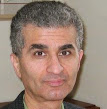There were no names, addresses, or phone numbers in the data, yet they argue that "if individual's patterns are unique enough, outside information can be used to link the data back to an individual." In fact, just four points of observation -- time of the call and the nearest cell-phone tower -- were enough to identify 95 percent of individuals in the data et.
If someone is able to cross-reference that with the Twitter feed, say, he could be able to build a pretty good picture of who be that person .
The pattern still worked when the researchers "coarsened" their sample by using less specific time observations and by lumping multiple cell-phone towers into one.
Evidently, the way people move through the world and share and communicate information is quite distinctive.
de Montjoye has stated that: "We use the analogy of the fingerprint, in the 1930s, Edmond Locard, one of the first forensic science pioneers, showed that each fingerprint is unique, and you need 12 points to identify it. So here what we did is we took a large-scale database of mobility traces and basically computed the number of points so that 95 percent of people would be unique in the dataset."
Since phone companies need to keep this kind of data for billing and customer service purposes, it seems inevitable that it would sooner or later be put to questionable use by the security agencies of various governments.
The authors have an op-ed in the Christian Science Monitor arguing that consumers should be granted more control over and more information about how much of their data is being stored and for what purpose.
Their study "shows that when it comes to rich metadata datasets, there are no clear cut between anonymous and not anonymous data. Achieving anonymity is really hard and might even be algorithmically impossible."
The paper may be found here:
http://www.nature.com/srep/2013/130325/srep01376/pdf/srep01376.pdf

No comments:
Post a Comment